Introduction
Rock Sugar Pear Soup, known as Bingtang Xueli in Chinese, is a timeless dessert soup revered for its delicate sweetness and comforting warmth. Originating from traditional Chinese medicine, this dish combines the natural juiciness of pears with the subtle caramel-like flavor of rock sugar, creating a harmonious blend that soothes the throat, hydrates the body, and delights the taste buds. While its simplicity might suggest it’s easy to prepare, achieving the perfect balance of flavors and textures requires attention to detail. This article will guide you through selecting the finest ingredients, mastering cooking techniques, and exploring creative variations to elevate this humble soup into a culinary masterpiece.
The Science Behind the Sweetness
At the heart of this soup lies the interplay between pears and rock sugar. Pears, particularly Asian varieties like Ya pear (Nashi pear), are prized for their crisp texture and high water content, which releases a refreshing juice when cooked. Rock sugar, or bingtang, is an unrefined cane sugar that melts slowly, infusing the broth with a mellow sweetness without overwhelming the pear’s natural flavor. Unlike granulated sugar, rock sugar’s larger crystals dissolve gradually, allowing the soup to develop depth over gentle simmering.
Ingredients: Quality Matters
- Pears: Opt for firm, aromatic pears with smooth, unblemished skin. Asian pears are ideal due to their low acidity and high sugar content, but Bosc or Anjou pears can substitute if needed. Avoid overly ripe fruit, as they may turn mushy during cooking.
- Rock Sugar: Choose pale yellow or amber-hued crystals. Darker shades indicate a richer molasses flavor, which can dominate the soup.
- Water: Use filtered water to prevent mineral aftertastes.
- Optional Enhancements:
- Goji Berries: Add a tangy-sweet kick and vibrant color.
- Dried Jujube Dates: Impart a subtle, honey-like aroma.
- Fresh Ginger: A thin slice adds warmth and aids digestion.
- Wolfberries: For a nutty, earthy note.
Step-by-Step Preparation
Preparing the Pears
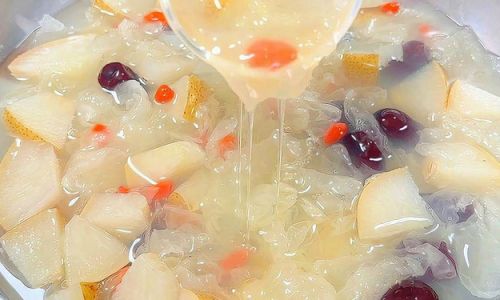
- Peeling: While some recipes retain the skin for added fiber, peeling ensures a smoother broth. Use a vegetable peeler to remove the skin in downward strokes, avoiding the flesh.
- Coring: Halve the pear lengthwise and use a melon baller or spoon to scoop out the core, seeds, and tough central stem.
- Slicing: Cut the pear into uniform wedges or chunks. Consistent sizing ensures even cooking.
Simmering Technique
- Ratio: For every two medium pears, use 6 cups of water and ¼ cup rock sugar. Adjust sweetness to taste.
- Bring to Boil: In a stainless steel or clay pot, combine water, pears, and rock sugar. Bring to a rolling boil over medium-high heat.
- Gentle Simmer: Reduce heat to low, skim off any foam, and let the soup bubble gently for 20–30 minutes. Avoid vigorous boiling, which can break down the pears into mush.
Adding Depth with Extras
- Late Additions: Toss in goji berries, jujube dates, or wolfberries during the last 5 minutes of cooking to preserve their texture.
- Ginger Infusion: Add a ½-inch slice of fresh ginger at the start for a subtle spice, removing it before serving.
Finishing Touches
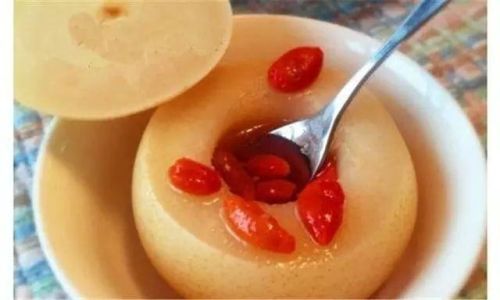
- Taste and Adjust: If the soup tastes flat, add a pinch of sea salt to brighten the flavors. For extra richness, drizzle a teaspoon of honey or osmanthus syrup.
- Serving Options: Serve hot in winter, chilled in summer, or at room temperature. Garnish with fresh mint leaves or a sprinkle of toasted sesame seeds.
Troubleshooting Common Pitfalls
- Mushy Pears: Overcooking is the culprit. Test doneness by piercing a chunk with a fork—it should yield slightly but retain its shape.
- Cloudy Broth: High heat or impurities in water can cause cloudiness. Use filtered water and maintain a low simmer.
- Bland Flavor: Ensure the pear-to-sugar ratio is balanced. Aging the soup overnight in the fridge allows flavors to meld.
Creative Variations
- Herbal Infusion: Add chrysanthemum flowers or licorice root for a medicinal twist.
- Floral Notes: Steep a dried osmanthus flower bundle during simmering for a honey-like aroma.
- Dairy-Free Creaminess: Blend a portion of the soup with coconut milk before straining for a velvety texture.
- Spiced Version: Incorporate a cinnamon stick or star anise during cooking, removing spices before serving.
Cultural Significance
In Chinese households, Rock Sugar Pear Soup is more than a dessert—it’s a gesture of care. Mothers often prepare it for children with colds, believing it moistens the lungs and eases coughs. During the Mid-Autumn Festival, it’s served alongside mooncakes as a palate cleanser. The act of simmering the soup itself is meditative, a ritual that connects generations through shared culinary wisdom.
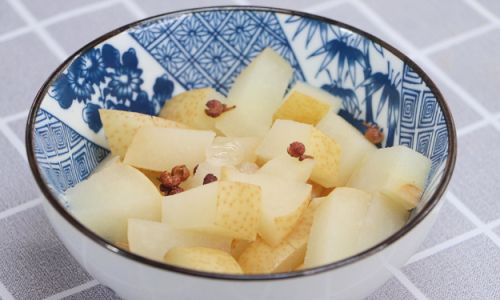
Health Benefits Beyond Taste
- Hydration: The soup’s high water content aids digestion and combats dryness.
- Antioxidants: Pears are rich in vitamin C and dietary fiber, supporting immune health.
- Soothing Properties: Rock sugar is traditionally used to alleviate sore throats and reduce inflammation.
Pairing Suggestions
- Savory Counterparts: Serve with steamed dumplings or glutinous rice balls for a balanced meal.
- Tea Pairing: Matcha or chrysanthemum tea complements the soup’s sweetness without clashing.
- Dessert Duo: Pair with almond jelly or red bean soup for a multi-textured dessert platter.
Storage and Reheating
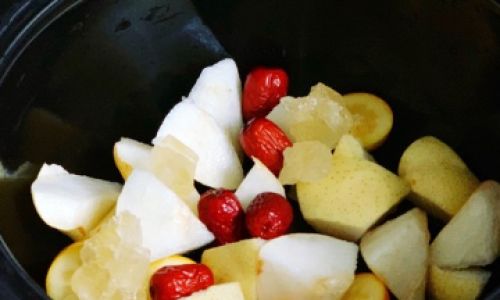
- Refrigeration: The soup keeps for up to three days in an airtight container. The flavors intensify overnight.
- Reheating: Gently warm on the stove over low heat to preserve texture. Avoid microwaving, which can make pears soggy.
Conclusion
Rock Sugar Pear Soup is a testament to the beauty of simplicity. By honoring tradition while embracing creativity, you can transform basic ingredients into a dish that nourishes both body and soul. Whether you’re seeking relief from a winter chill or a comforting finale to a meal, this soup invites you to slow down, savor each spoonful, and appreciate the artistry in every detail. So, gather your pears, melt your rock sugar, and let the kitchen fill with the aroma of a time-honored classic—your taste buds will thank you.



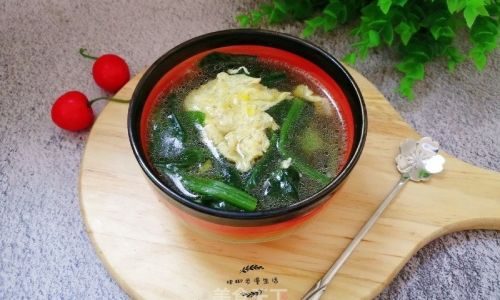

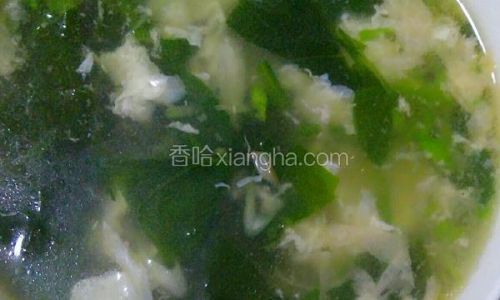
0 comments